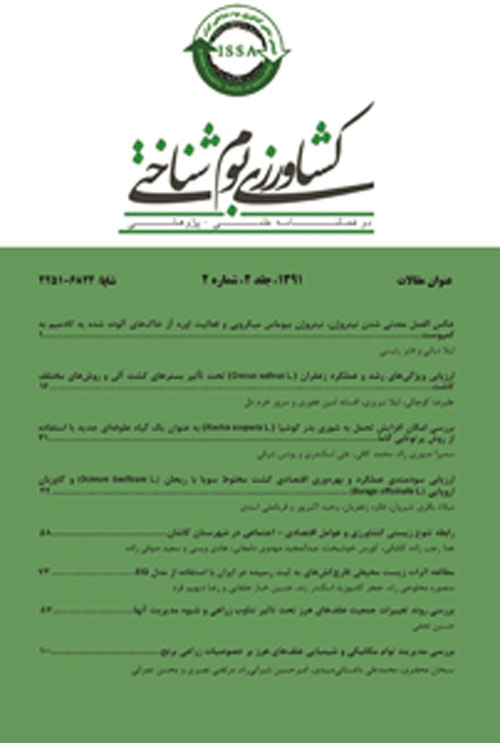Structural evolution of the pistachio global market with emphasis on the role of Iran
Author(s):
Abstract:
Introduction
Analysis of the structure of the global market and identifying the comparative advantages is one of the most important measures to promote exports and investment in export production (Li and Bender, 2002). The focus of this study is the structure and development of the pistachio trade market with an emphasis on the role of Iran in recent years. For this purpose, basic indices of market structure have been introduced and calculated.Materials and metods: The structure of the world pistachio export market has been investigated to determine the degree of the concentration of exporters and importers based on market concentration indices (e.g. the reverse of the number of active firms doing pistachio import/export), concentration ratio of pistachio import/export firms, Herfindahl-Hirschman Index, and Hannah-Kay index (Hannah and Kay, 1977). Changes in these indicators over time have been analyzed as a measure of the structural changes in the global market. The role that Iran can and should take in these developments has also been determined based on the revealed comparative advantage (RCA) and symmetric RCA (Mehrabi Boshrabadi and Neshat, 2009).
Results And Discussions
For many years (before 2008), Iran was the worlds top pistachio exporter with more than half of all exports coming from Iran. During 2008-2013, however, that share has diminished. From 37% in 2008, pistachio exports dropped to 17% in 2013. This decline reflects the advancement of competitor countries, especially the USA, in world markets. The results showed a strong monopoly in the market structure of pistachios with four dominant firms from Iran, America, China and Turkey in the period under review. Irans comparative advantage is very high compared to others, but the downward trend during this period indicates the absence of a specific export strategy.Conclusion
Internal and external barriers against the export of Iranian pistachios, along with opportunistic countries such as America and Turkey that have implemented long-term plans to increase market share, have caused severe fluctuations in Iranian pistachio exports in recent years. Having long-term programs to promote exports on the agenda along with active and flexible business policies could lead to better comparative advantages in agriculture. Controlling and stabilizing the exchange rate policy could also affect the stability of exports and therefore the export comparative advantage. Clear information on future trends in exchange rates will have an important role in maintaining Iran's position in global markets.Keywords:
Language:
Persian
Published:
Journal of Agroecology, Volume:7 Issue: 1, 2017
Page:
186
magiran.com/p1733956
دانلود و مطالعه متن این مقاله با یکی از روشهای زیر امکان پذیر است:
اشتراک شخصی
با عضویت و پرداخت آنلاین حق اشتراک یکساله به مبلغ 1,390,000ريال میتوانید 70 عنوان مطلب دانلود کنید!
اشتراک سازمانی
به کتابخانه دانشگاه یا محل کار خود پیشنهاد کنید تا اشتراک سازمانی این پایگاه را برای دسترسی نامحدود همه کاربران به متن مطالب تهیه نمایند!
توجه!
- حق عضویت دریافتی صرف حمایت از نشریات عضو و نگهداری، تکمیل و توسعه مگیران میشود.
- پرداخت حق اشتراک و دانلود مقالات اجازه بازنشر آن در سایر رسانههای چاپی و دیجیتال را به کاربر نمیدهد.
In order to view content subscription is required
Personal subscription
Subscribe magiran.com for 70 € euros via PayPal and download 70 articles during a year.
Organization subscription
Please contact us to subscribe your university or library for unlimited access!


